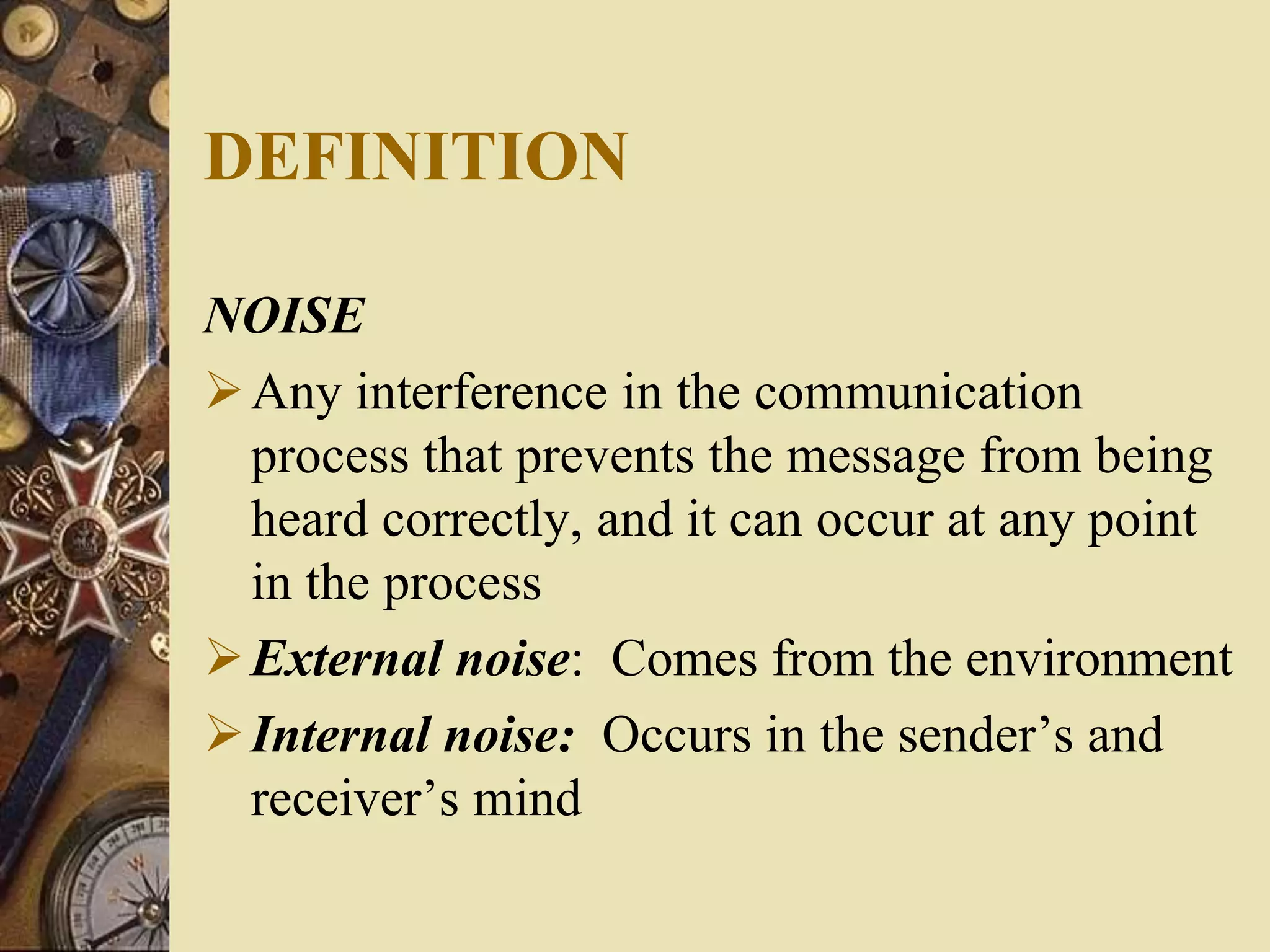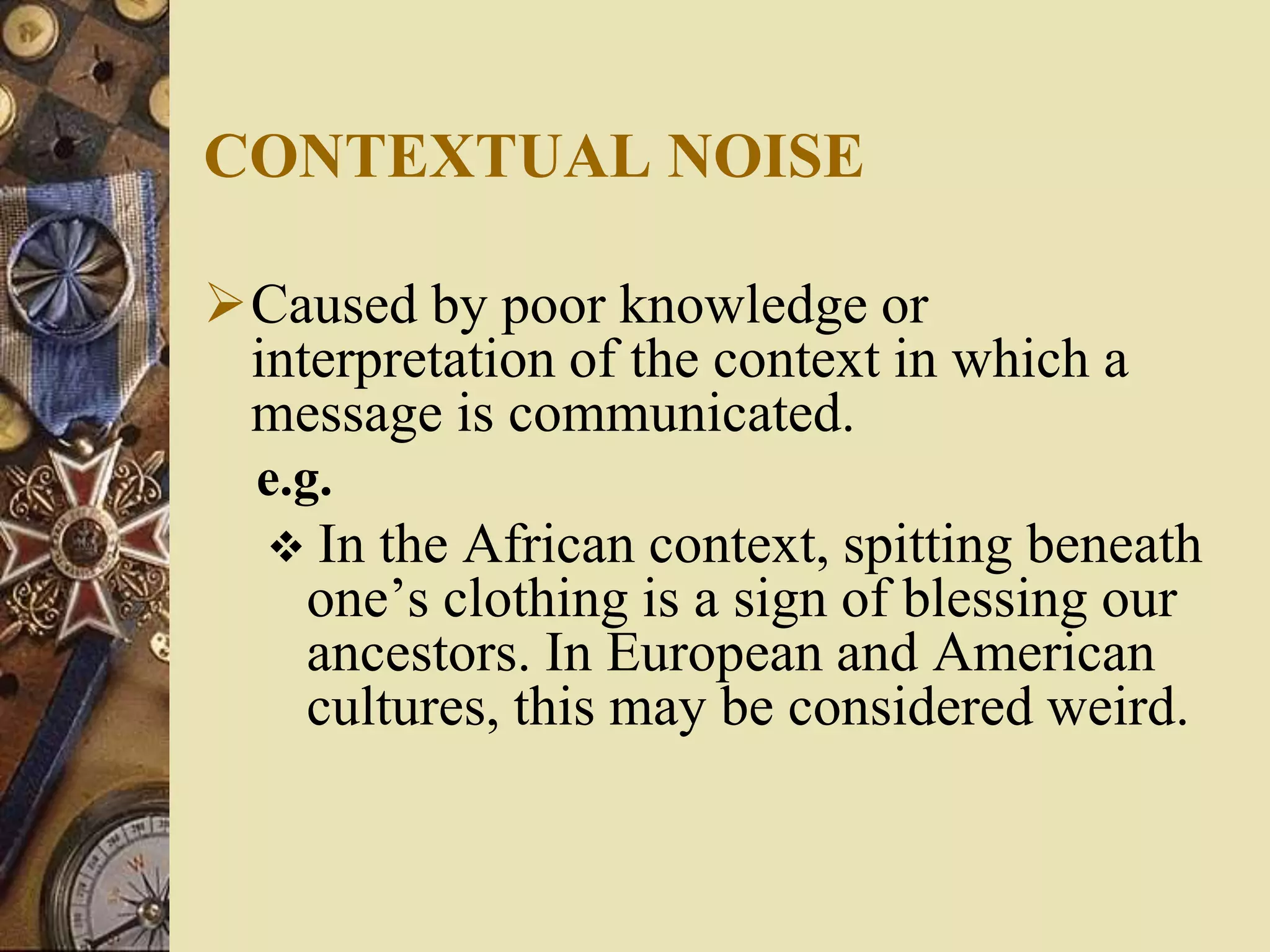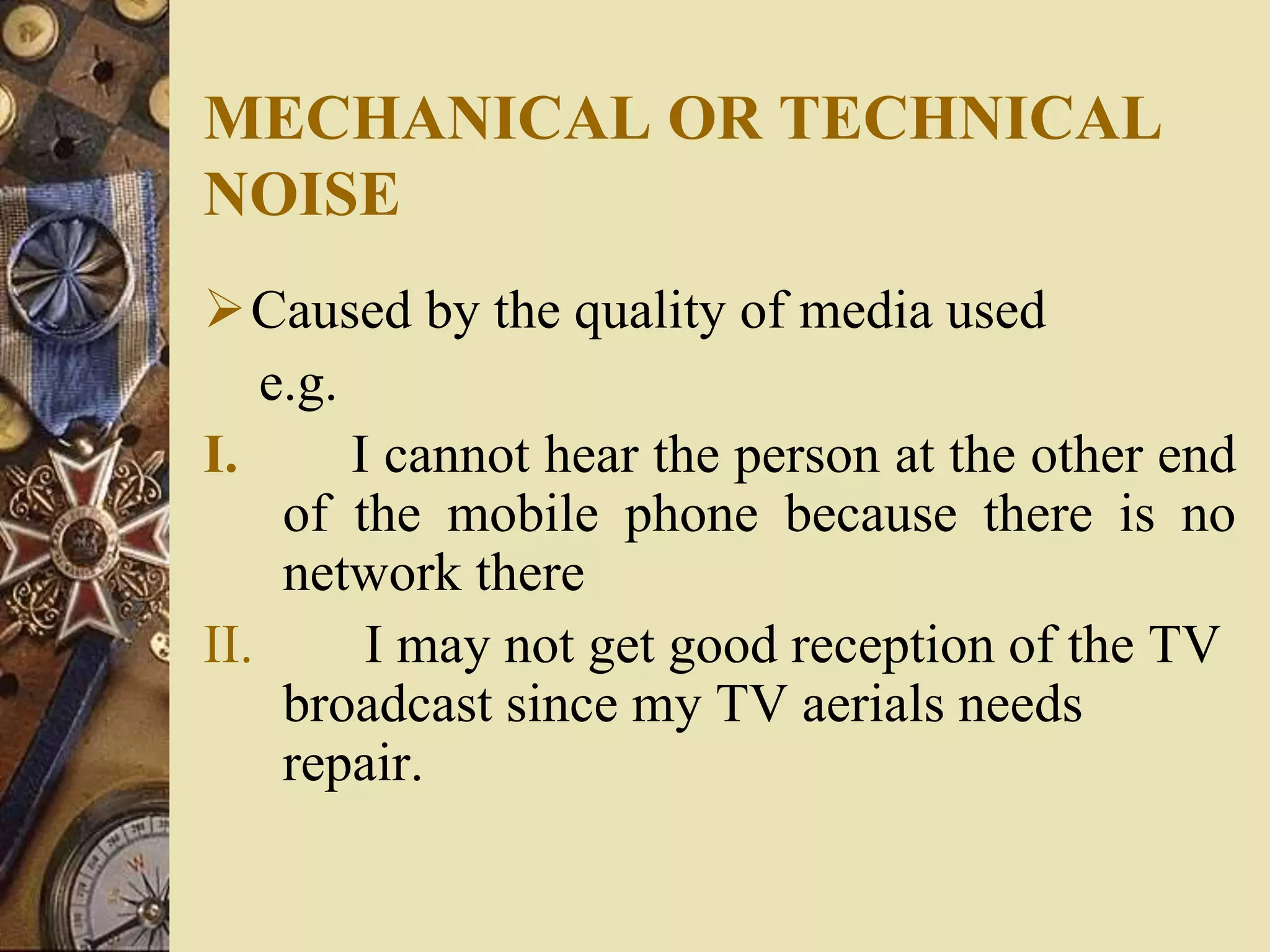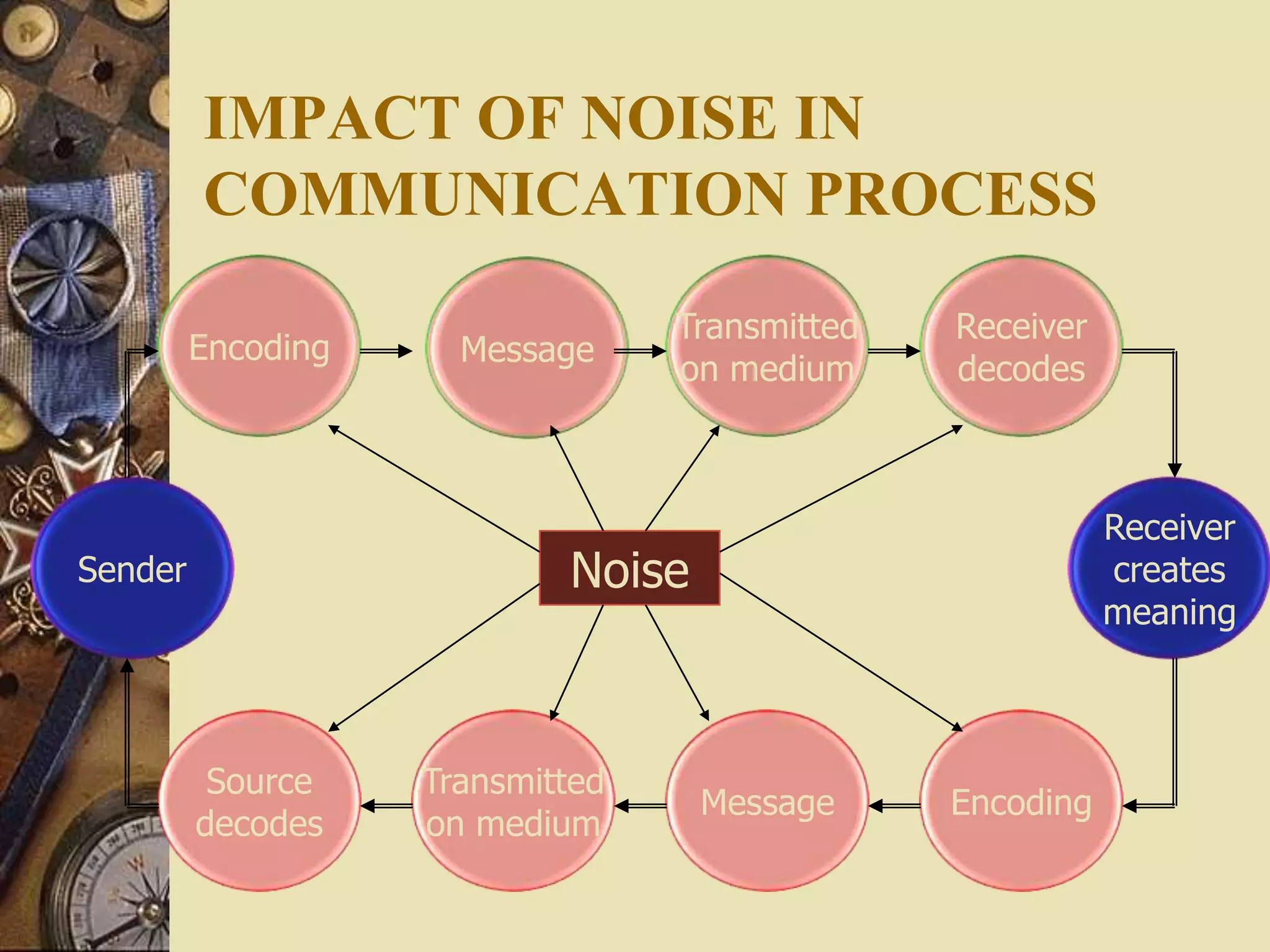This document discusses noise in the communication process. It defines noise as any interference that prevents a message from being understood correctly, which can come from external environmental sources or internal mental states. The document outlines several types of noise including contextual, mechanical, physical, psychological, physiological, and semantic noise. It also discusses how noise can impact the communication process and identifies some common sources of noise such as a lack of feedback, cultural differences, information overload, distractions, poor channel choice, and status effects. Finally, it provides recommendations for overcoming noise through active listening, adopting an audience-centered approach, managing information overload, encouraging feedback, fostering open communication, reducing filtering, and using appropriate communication channels.




























